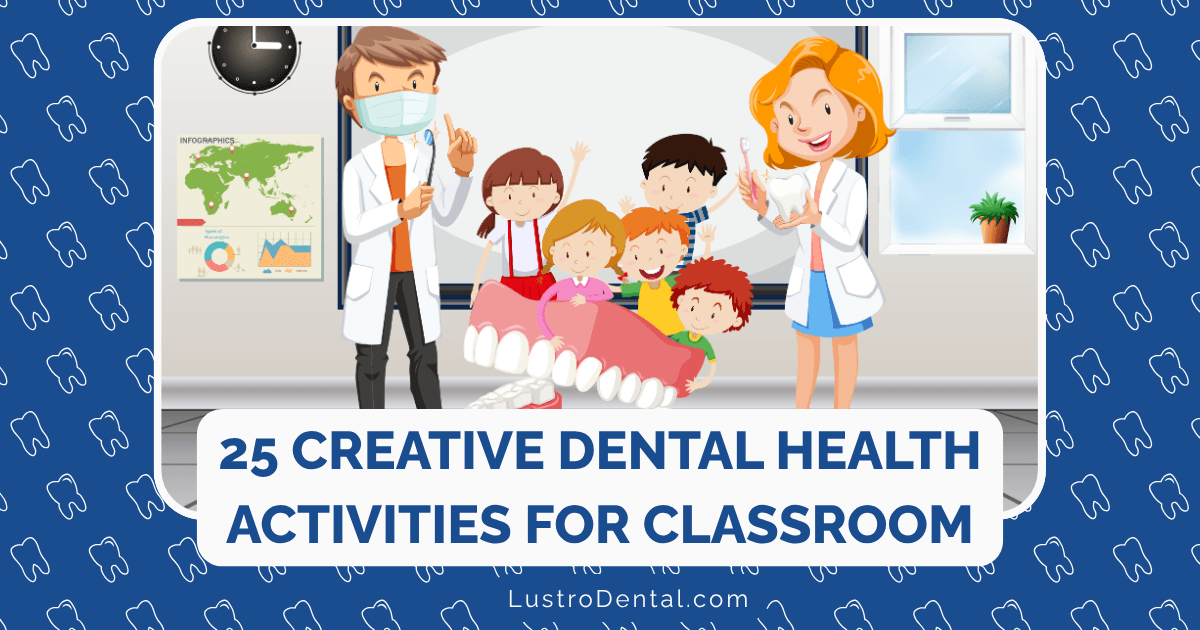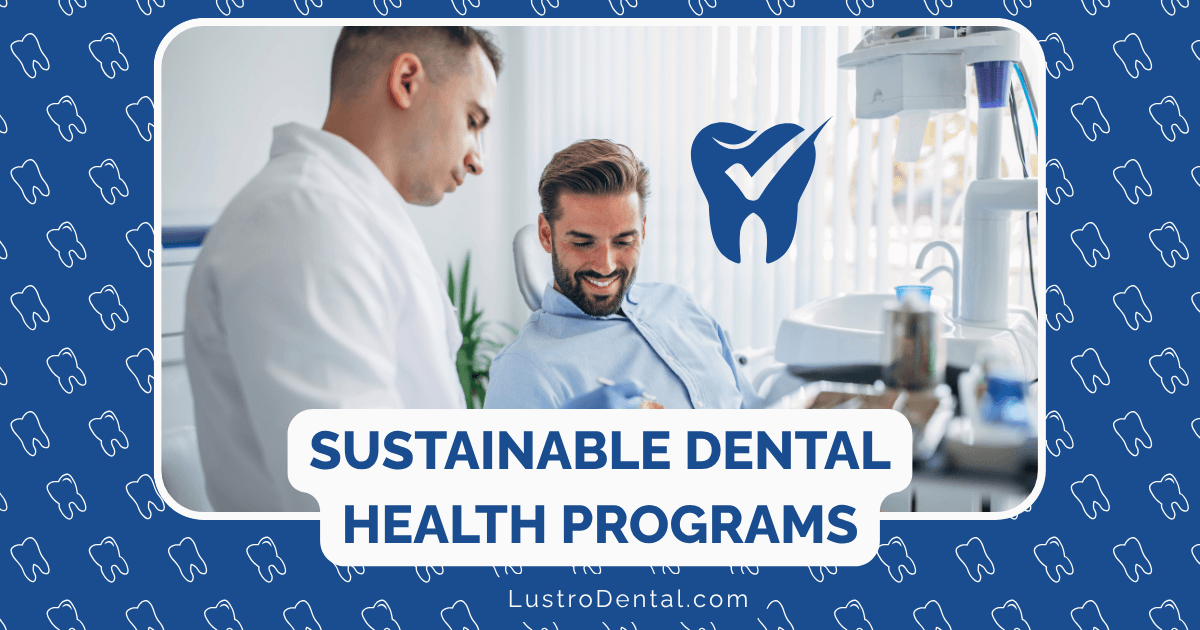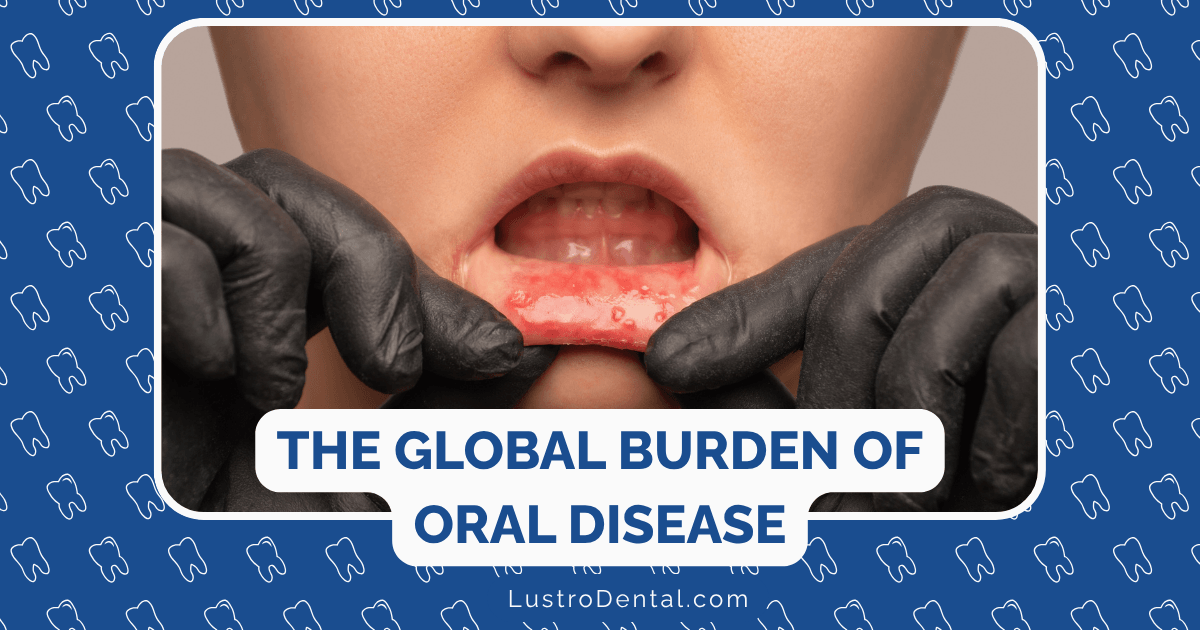25 Engaging Classroom Activities for Teachers During Dental Health Month

February marks National Children’s Dental Health Month, offering the perfect opportunity to incorporate oral health education into your classroom curriculum. Beyond simply telling students to brush and floss, these interactive activities will engage young learners while building lifelong healthy habits.
We’ve compiled 25 classroom activities that span multiple subject areas and grade levels, complete with materials lists and implementation tips. Whether you’re a preschool teacher or work with upper elementary students, you’ll find age-appropriate options to make dental health education both educational and fun.
Science-Based Dental Activities
1. The Egg-speriment: Demonstrating Tooth Decay
Grade Level: K-5
Materials: Hard-boiled eggs, clear containers, various drinks (cola, sports drinks, water, coffee)
Instructions:
- Discuss how eggshells are similar to tooth enamel (both contain calcium).
- Place hard-boiled eggs in different containers and cover each with a different liquid.
- Have students predict what will happen to each egg.
- Observe daily for one week, documenting changes with photos or drawings.
- After a week, remove eggs and attempt to brush off stains using toothbrushes and toothpaste.
This powerful visual demonstration helps students understand how acidic and sugary drinks affect tooth enamel. For older students, incorporate pH testing of the liquids to add a chemistry component.
Connection to Standards: NGSS Science and Engineering Practices – Planning and Carrying Out Investigations
2. Growing Plaque Experiment
Grade Level: 3-5
Materials: Clear containers, yeast, warm water, sugar, toothpaste
Instructions:
- Mix warm water and yeast in clear containers to represent bacteria in the mouth.
- Add sugar to one container (representing eating sugary foods) and nothing to the control container.
- Add a small amount of toothpaste to a third container.
- Have students observe and record changes over several hours.
- Discuss how the mixture with sugar grows faster (like plaque) while the toothpaste inhibits growth.
This experiment, recommended by the American Dental Association, makes the invisible concept of bacterial growth tangible for students.
3. Dental Impressions Lab
Grade Level: 4-5
Materials: Alginate powder, mixing bowls, plastic spoons, small paper cups, plaster of Paris
Instructions:
- Mix alginate powder with water according to package directions.
- Have students make impressions of small objects (like toy dinosaurs or shells).
- After the alginate sets, remove the objects and pour plaster of Paris into the impressions.
- Once dry, remove the plaster casts and discuss how dentists use similar techniques.
This activity introduces students to dental technology while incorporating measurement and following procedural text.
Math Connections
4. Tooth Tally Graph
Grade Level: K-2
Materials: Chart paper, markers, tooth-shaped cutouts
Instructions:
- Create a class graph showing how many teeth each student has lost.
- Have students add a tooth cutout to the graph when they lose a tooth during the school year.
- Use the graph for math discussions about more/less, total, and comparing numbers.
This ongoing activity makes data collection meaningful and personal for young students.
5. Toothbrush Timer Math
Grade Level: 1-3
Materials: Sand timers or digital timers, math worksheets
Instructions:
- Discuss how dentists recommend brushing for two minutes.
- Have students estimate what activities take about two minutes.
- Use two-minute timers to complete math fact challenges or estimation activities.
- Create a class chart of “Things We Can Do in Two Minutes.”
This activity reinforces time concepts while connecting to dental health recommendations from the Centers for Disease Control and Prevention.
6. Dental Health Survey and Data Analysis
Grade Level: 3-5
Materials: Survey sheets, graph paper, colored pencils
Instructions:
- Have students create survey questions about dental habits (How many times do you brush? Have you visited the dentist this year? etc.).
- Collect data from classmates or other classes.
- Create appropriate graphs to display the data.
- Analyze results and draw conclusions about dental health habits.
This cross-curricular activity develops research skills while applying math concepts in a real-world context.
Literacy and Language Arts
7. Dental Health Vocabulary Building
Grade Level: K-5
Materials: Dental health picture cards, vocabulary lists, writing materials
Instructions:
- Introduce age-appropriate dental vocabulary (dentist, cavity, enamel, fluoride, etc.).
- For younger students, match pictures to vocabulary words.
- For older students, create a dental health dictionary with illustrations and definitions.
- Use vocabulary in writing prompts throughout the month.
Vocabulary resources from MouthHealthy Kids can provide grade-appropriate word lists.
8. Persuasive Writing: Convince the Tooth Fairy
Grade Level: 2-5
Materials: Writing paper, art supplies
Instructions:
- Challenge students to write persuasive letters to the Tooth Fairy arguing why their tooth deserves a special reward.
- Encourage use of dental facts and vocabulary in their arguments.
- For younger students, create a class persuasive letter together.
- Optional: Create decorated envelopes or tooth-shaped paper for the final drafts.
This engaging writing prompt naturally incorporates dental health concepts while practicing persuasive techniques.
9. Dental Health Reading Response Center
Grade Level: K-5
Materials: Selection of dental health books, response journals, graphic organizers
Recommended Books:
- “The Tooth Book” by Dr. Seuss (K-1)
- “How Many Teeth?” by Paul Showers (K-2)
- “Open Wide: Tooth School Inside” by Laurie Keller (2-3)
- “The Mouth With a Mind of Its Own” by Pat Thomas (3-5)
Instructions:
- Set up a reading center with books about dental health.
- Provide differentiated response activities based on grade level.
- Younger students can sequence events or draw and label parts of a tooth.
- Older students can compare information across texts or create informational posters.
This station-based approach allows for differentiation while building reading comprehension skills.
Art and Creative Expression
10. 3D Tooth Models
Grade Level: 3-5
Materials: Clay or Model Magic, toothpicks, paint, reference diagrams
Instructions:
- Show students diagrams of tooth anatomy from resources like Colgate’s Bright Smiles, Bright Futures.
- Have students create 3D models showing the layers of a tooth (enamel, dentin, pulp).
- Label each part with toothpick flags.
- Display models with informational cards written by students.
This hands-on project helps students visualize the internal structure of teeth while practicing following directions and labeling.
11. Toothbrush Painting Technique
Grade Level: K-2
Materials: Old toothbrushes, tempera paint, construction paper, smocks
Instructions:
- Demonstrate how to dip toothbrushes in paint and create different textures.
- Have students create tooth-shaped art or other dental-themed images.
- Display artwork with dental health facts or slogans.
This sensory activity repurposes toothbrushes while reinforcing their importance for dental health.
12. Smile Self-Portraits
Grade Level: K-5
Materials: Mirrors, drawing paper, colored pencils or crayons
Instructions:
- Have students observe their smiles in mirrors.
- Create self-portraits focusing on their smiles.
- Write reflections about what makes their smile special and how they take care of it.
- Create a classroom display titled “Our Healthy Smiles.”
This activity builds self-awareness while promoting positive dental health identity.
Dramatic Play and Movement
13. Dental Office Dramatic Play Center
Grade Level: K-2
Materials: White shirts or lab coats, toothbrushes, dental mirrors (plastic), appointment books, play teeth models
Instructions:
- Set up a pretend dental office with examination area, waiting room, and reception desk.
- Provide props for students to role-play dentists, hygienists, and patients.
- Include books about dental visits in the waiting area.
- Add writing materials for making appointments and patient charts.
This imaginative play center helps reduce dental anxiety by familiarizing students with dental office procedures in a non-threatening environment.
14. Tooth Brushing Dance
Grade Level: K-3
Materials: Music, toothbrushes (without toothpaste)
Instructions:
- Create or find a two-minute song about brushing teeth.
- Teach students proper brushing techniques using their toothbrushes.
- Choreograph simple movements to remember the technique.
- Practice the “brush dance” daily as a movement break.
This kinesthetic activity reinforces proper brushing technique while providing needed movement breaks. The American Dental Association offers free downloadable brushing songs.
15. Floss the Classroom
Grade Level: K-5
Materials: Ball of yarn, classroom chairs
Instructions:
- Arrange chairs in pairs to represent “teeth.”
- Have students take turns being the “floss” by weaving yarn between the chairs.
- Discuss how floss removes food particles from between teeth.
- For older students, time the activity and discuss efficiency of movement.
This whole-body activity demonstrates flossing on a large scale, making the concept more concrete.
STEM Challenges
16. Design a Better Toothbrush
Grade Level: 3-5
Materials: Craft supplies, recycled materials, design worksheets
Instructions:
- Discuss the history of toothbrushes and how they’ve evolved.
- Challenge students to design an improved toothbrush for a specific user (young child, person with braces, etc.).
- Create prototypes using available materials.
- Present designs in a “Shark Tank” style pitch format.
This engineering challenge incorporates design thinking while applying dental health knowledge.
17. Plaque-Scraping Robot Challenge
Grade Level: 4-5
Materials: Simple robots (like Sphero or Dash), obstacles representing teeth, coding materials
Instructions:
- Set up a “mouth” obstacle course with spaces between “teeth.”
- Challenge students to program robots to navigate the course and “clean” between teeth.
- Add complexity by designating certain areas as having “plaque” that needs extra attention.
This coding activity builds computational thinking skills while reinforcing dental cleaning concepts.
18. Toothpaste Chemistry Lab
Grade Level: 4-5
Materials: Baking soda, salt, glycerin, water, measuring tools, mixing containers
Instructions:
- Research ingredients in commercial toothpaste.
- Discuss the purpose of each ingredient (abrasives, fluoride, flavoring, etc.).
- Follow a simple recipe to create a basic toothpaste.
- Test and evaluate the effectiveness and appeal of the homemade product.
This chemistry activity from Delta Dental’s educational resources connects dental health to real-world product development.
Social Studies Connections
19. Dental Health Around the World
Grade Level: 3-5
Materials: World map, research materials, presentation supplies
Instructions:
- Assign student groups different countries or regions.
- Research dental traditions and practices from those areas.
- Create presentations about findings (traditional cleaning tools, unique customs, etc.).
- Discuss how geography, economics, and culture influence dental health practices.
This global perspective helps students understand dental health from a cultural viewpoint.
20. Dental Health History Timeline
Grade Level: 3-5
Materials: Timeline template, research materials, art supplies
Instructions:
- Research the history of dental care from ancient civilizations to modern practices.
- Create a classroom timeline showing major developments.
- Add illustrations and explanations for each advancement.
- Discuss how science and technology have improved dental health over time.
This historical approach connects dental health to broader themes of human innovation and progress.
Take-Home Connections
21. Family Brushing Calendar
Grade Level: K-5
Materials: Printed calendars, stickers, family letter
Instructions:
- Create a month-long brushing calendar for students to take home.
- Include spaces for morning and evening brushing checks.
- Send home with a family letter explaining the importance of consistent brushing.
- Offer simple rewards for completed calendars returned to school.
This home connection reinforces classroom learning and encourages family involvement in dental health routines.
22. Healthy Smile Recipe Book
Grade Level: 2-5
Materials: Recipe template, art supplies, binding materials
Instructions:
- Discuss foods that promote dental health (calcium-rich, low sugar, crunchy vegetables, etc.).
- Have each student contribute a tooth-friendly recipe.
- Compile recipes into a class cookbook with dental health facts.
- Send home copies to families to try the recipes together.
This nutrition-focused activity from Colgate’s educational resources connects dental health to broader wellness concepts.
23. Dental Emergency Plan
Grade Level: 3-5
Materials: Scenario cards, planning worksheets, family information sheet
Instructions:
- Discuss common dental emergencies (knocked-out tooth, broken tooth, etc.).
- Have students create action plans for different scenarios.
- Research local emergency dental resources.
- Create take-home reference sheets for families with emergency information.
This practical activity builds problem-solving skills while providing valuable family resources.
Assessment and Reflection
24. Dental Health Knowledge Pre/Post Assessment
Grade Level: K-5
Materials: Age-appropriate assessment tools (picture sorting for younger students, quizzes for older)
Instructions:
- Administer a pre-assessment of dental knowledge at the beginning of the unit.
- Teach dental health activities throughout the month.
- Give the same assessment at the end to measure learning.
- Have students reflect on what they’ve learned and how their habits might change.
This evaluation approach helps measure the effectiveness of your dental health curriculum.
25. “Tooth Wisdom” Class Book
Grade Level: K-5
Materials: Book template pages, art supplies, binding materials
Instructions:
- Have each student create a page sharing their most important dental health learning.
- Include both illustrations and writing appropriate to grade level.
- Compile pages into a class book.
- Share the book during reading time and then add it to the class library.
This culminating project synthesizes learning while creating a lasting resource for the classroom.
Resources for Teachers
To support these activities, several organizations offer free educational materials:
- American Dental Association’s National Children’s Dental Health Month Resources – Includes downloadable posters, activity sheets, and presentation materials.
- Colgate Bright Smiles, Bright Futures – Offers free classroom kits with toothpaste and toothbrush samples for students.
- Delta Dental’s Educational Resources – Provides lesson plans, activities, and videos sorted by grade level.
- MouthHealthy Kids – Features interactive games, videos, and worksheets for classroom use.
Conclusion
Dental Health Month provides an ideal opportunity to integrate important health education into your curriculum while meeting academic standards across multiple subject areas. By making dental health engaging and interactive, you’re helping students develop habits and knowledge that will benefit them throughout their lives.
Which activities will you try in your classroom this February? Share your experiences and additional ideas in the comments below!







